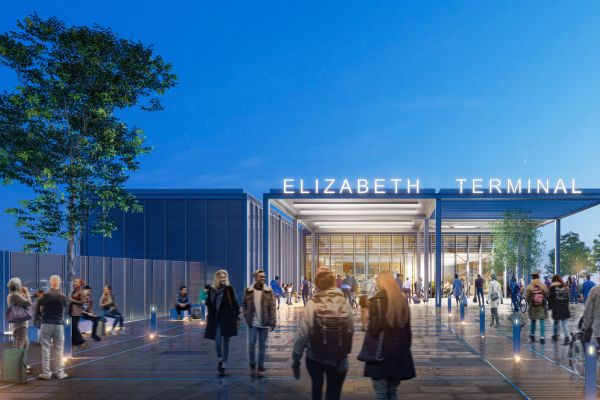Meeting the Island’s needs for today and tomorrow
Elizabeth Harbour plays a vital role in Jersey’s supply chain, handling essential goods such as food, medicines, mail and clothing. With the Roll On Roll Off (RoRo) trailer operation now exceeding capacity, the Harbour Master Plan proposes relocating the Lift On Lift Off (LoLo) crane operation from New North Quay to Elizabeth Harbour. By co-locating these freight facilities, we will increase efficiency, boost capacity, and safeguard the Island’s supply chain for future generations.
To achieve this, new land will be created through a combination of suspended deck construction and reclamation. This will provide a significant increase in usable area, supporting anticipated freight requirements and freeing up space at New North Quay for future development.
Transforming the passenger experience
The current Elizabeth Terminal, opened in 1989, is no longer fit for purpose. Our plans include building a new ferry terminal that will greatly enhance the start and end of passenger journeys, improve visitors’ first and lasting impressions of Jersey, and create a public destination with views of Elizabeth Castle.
Improving connectivity and access
Connectivity between town and Elizabeth Harbour will be reconfigured to provide easier and safer access for all users.
Under our proposals:
- all traffic will continue to access the harbour via La Route du Port Elizabeth from St Helier.
- freight and ferry passengers will separate at the roundabout for improved flow.
- freight traffic will use the existing route to the ferry, restricted area and port operator warehouses.
- ferry passengers will access the terminal via a new entrance from Rue de L’Etau.
- pedestrians and cyclists will also use Rue de L’Etau, with a segregated route parallel to vehicles.
- all freight and passenger traffic will exit Elizabeth Harbour using different routes onto La Route du Port Elizabeth.
Sustainability and social values
The Elizabeth Harbour redevelopment is designed to be environmentally friendly and socially responsible. The project aims to cut carbon emissions by using low-energy construction methods, choosing sustainable materials, and reusing as much as possible. Waste will be kept to a minimum, with recycling and reuse prioritised throughout the build.
Protecting nature is a key focus, with plans to improve marine habitats and reduce water use. Regular checks will make sure noise, dust and pollution are controlled, and all staff will receive environmental training.
The project also supports the local community by creating jobs, offering apprenticeships, and working with schools and colleges. There will be opportunities for local businesses and financial support for community initiatives. Heritage buildings will be preserved and included in the harbour’s future.

